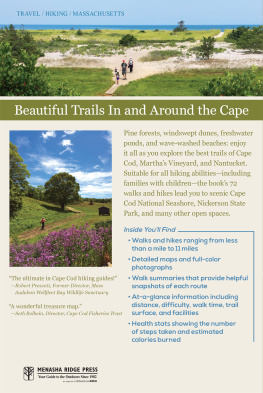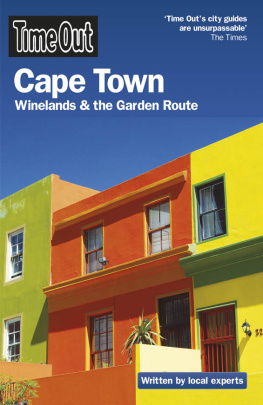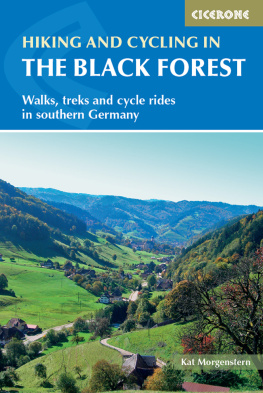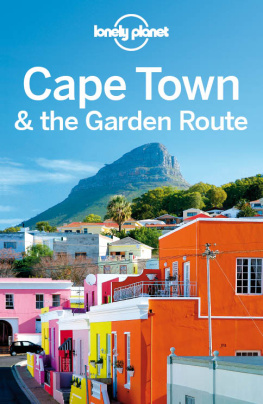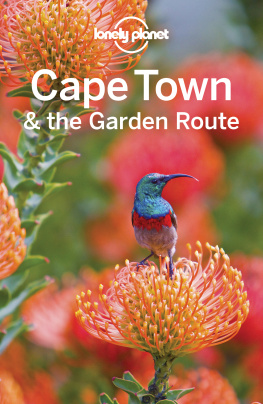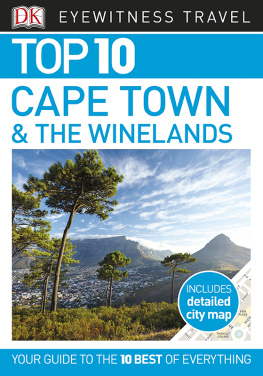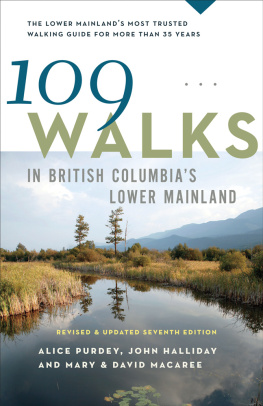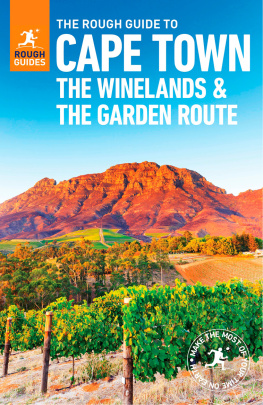MIKE LUNDYS
BEST
WALKS
IN THE CAPE PENINSULA
Published by Struik Travel & Heritage (an imprint of Random House Struik (Pty) Ltd) Company Reg. No. 1966/003153/07 Wembley Square, First Floor, Solan Road, Gardens, Cape Town 8001, South Africa PO Box 1144, Cape Town 8000, South Africa
First published in 1991; Second edition 1995, Reprinted 1996, 1997, 1998; Third edition 1999; Fourth edition 2002; Fifth edition 2003; Sixth edition 2005; Seventh edition 2006, Reprinted 2010; Eighth edition 2012
ISBN (Print) 978 1 92054 566 6
ISBN (ePub) 978 1 92054 550 5
ISBN (PDF) 978 1 92054 551 2
Copyright in published edition: Random House Struik 1991, 1995, 1999, 2002, 2003, 2005, 2006, 2012
Copyright text: Mike Lundy 1991, 1995, 1999, 2002, 2003, 2005, 2006, 2012
Copyright grading scale: Mike Lundy 1991, 1995, 1999, 2002, 2003, 2005, 2006, 2012
Copyright cover photograph: Bruce Stevens 2012
Copyright in photomaps: Mike Lundy 2012
Copyright maps: Euan Waugh 1991, 1995, 1999, 2002, 2003, 2005, 2006, 2012 with the exception of those on pages 32, 60, 72, 76, 82, 90, 102 and 106 copyright Random House Struik 1999, 2002, 2003, 2005, 2006, 2012
Illustrator: Ann Walton
All rights reserved. No part of this publication may be reproduced, stored in a retrieval system, or transmitted, in any form or by any means, electronic, mechanical, photocopying, recording or otherwise, without the prior written permission of the copyright owner(s) and publishers.
Get monthly updates and news by subscribing to our newsletter at www.randomstruik.co.za
For more information visit Mike Lundys website: www.hikecapetown.co.za
Garmin users can log on to www.gpstravelmaps.com/bestwalks.php to download GPS coordinates for all the walks in this book.
Although the author and publisher have made every effort to ensure that the information in this book was correct at the time of going to press, they accept no responsibility for any loss, injury or inconvenience sustained by any person using this book. Changes to paths and landmarks occur from time to time. Should you encounter any such changes, please contact the author at
Acknowledgements
A book of this nature is not written without considerable help, and I would like to thank the following people who so willingly assisted me in this task: my old school pal, Brian Georgeson, who re-walked each of these hikes to make the necessary changes to this edition; John Robertson, Paul Pigneguy, Ronny Boender, Shirley du Plessis and Jackie le Cordeur, all who accompanied me on many of these walks; Amanda de Jongh of the Chief Directorate: National Geo-Spatial Information at the Department of Rural Development and Land Reform in Mowbray for her cheerful helpfulness; and the experts in their various fields for their perceptive comments, in particular Ernst Baard and Atherton de Villiers, herpetologists at the Department of Nature and Environmental Conservation, Jonkershoek, the late Dr Bill Borchers, geologist, Dr Roger Smith, palaeontologist at the South African Museum, Peter Steyn, well-known ornithologist, and Professor William Bond of the Botany Department, University of Cape Town.
Extracts from the 1:50 000 topographical map published by the Chief Directorate: National Geo-Spatial Information Department (NGI) have been reproduced under the Government Printers Copyright Authority 9115 of 22 August 1990.
Foreword
Among the many contrasts and nuances of beauty and mood that make up South Africa, those of the Cape Peninsula, with its marvellous combination of sea, sky and mountain, are outstanding. This is the environment that Mike Lundy has chosen to write about, presenting the reader with a choice of carefully selected walks, many of which traverse the slopes and heights of Table Mountain. Giving practical advice on such vital aspects as mountain safety and capricious local weather conditions, he skilfully guides his reader through an area that lies within one of the six great floral kingdoms of the world. Table Mountain alone, supporting more than 1400 flowering plant species, is unparalleled in the enormous variety that occurs within so small a compass.
The potential reward for those seeking environmental and recreational inspiration is enormous. May they, like the author, hold fast to the idea that the pleasure we derive from our natural heritage must not blind us to our responsibility to conserve that heritage for future generations; may they also come to recognise that the environment is a pearl of great price. To protect this pearl mere talk of ecosystems, species and habitats is not enough. Instead we must live in awe of the senses, of light and shade and changing seasons, of life in an unspoilt environment. The author makes us aware of all these aspects. To those who tramp but do not trample underfoot, his message is an open invitation, not merely to visit but to climb and become involved.
Ive had the privilege of exploring this great mountain system over a lifetime and the experience has been unbelievably enriching and a constant source of joy and inspiration to me.
The Table, a symbol of hospitality, invites you. Mike Lundy has prepared a fantastic menu of walks. A great feast awaits you.
KENT DURR
Minister of Trade, Industries and
Tourism (19891991)
Ambassador and High Commissioner
to the Court of St Jamess, London
(19911995)
Introduction
Who can really say which are the best walks in the Cape Peninsula? When so many variables come into play, it is impossible to be objective, but I truly believe that most of the ones I have chosen will appeal to most hikers most of the time.
Lundy Grading
1. An easy stroll
2. Tiring
3. Strenuous
4. Exhausting and only for the very fit
A. No exposure to heights
B. Some mild rock scrambling, but no worse than climbing a short ladder
C. Moderately exposed; those with a serious fear of heights should not attempt this walk
D. Very exposed; not for those with even a mild fear of heights
The walks are extremely varied, as is Mother Mountain herself, and range from an easy walk along the beach to some exciting cliffhangers, though ropes are not required on any of the walks or climbs. There is something, I believe, to suit all tastes.
I have continued with the simple but descriptive grading system successfully introduced in Twenty Walks Around Hout Bay. When taken into account along with the duration of the walk, it should give you a fairly accurate picture of what to expect. The grading system makes allowance for people who suffer from a fear of heights there seem to be a surprisingly large number of them.
I have measured the effort needed to complete the walk on a scale of 1 to 4 and combined it with a fear of heights (if the potential exists) on a scale of A to D (see the information panel above).
All times given for walks include a suitable allowance for rests. They are also what I feel the average reasonably fit person should be able to achieve.
On the assumption that most people cannot read complex maps but can, hopefully, read precise instructions, Ive kept the maps simple and the instructions detailed. I have tried hard to omit ambiguities, but no doubt I will still get complaints from people who got lost. As my Dear Old Dad used to say: When all else fails, READ THE INSTRUCTIONS.


